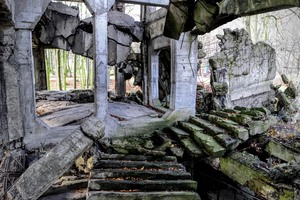Image may be NSFW.
Clik here to view.
On a tiny, cold and wet peninsula, outside the Free City of Danzig, the first shots of World War Two were fired. The first battle of the most devastating conflict in human history began when, on September 1, 1939 at 4:48am, the German battleship Schleswig-Holstein let loose a barrage of artillery onto the Polish naval depot, Westerplatte.
Despite the fact that Westerplatte was tiny and poorly guarded, it was a surprise to few that this would become the site of the first battle of a war long in the making. Within the Free City of Danzig (Gdańsk, today), Nazi support was at an all-time high among the largely German local population, which Hitler’s government had been trying to annex into the third Reich for years. Westerplatte was the location of the only Polish military presence in the area.
For nearly a decade, the Polish military had been warning its allies that a German attack was imminent, but provisions stipulated within the Treaty of Versailles limited the strength of the Westerplatte compound to just 88 soldiers. Against the treaty and in preparation of the ensuing violence, the Polish naval garrison began reinforcing their meager existing fortifications with machine guns, mortars, and antitank weaponry while the number of soldiers stationed there was nearly tripled.
It was all for naught, as the Germans won the battle, but against all odds, the outnumbered and outgunned Polish soldiers were able to keep a force more than ten times their number at bay for seven days. In the end, of the 3,400 Germans who took part in the battle, 300 died. Only around 15 of the 210 Polish forces perished.
German General, Friedrich-Georg Eberhardt, was so impressed with the valor and heroism of the Polish forces that, following the battle, he allowed Polish Major Henryk Sucharski to carry his saber into captivity and saluted the fallen Polish forces. The heroism of the loss became a rallying cry for Polish underground resistance throughout the war and the battle has been compared by Polish historians to Thermopylae and Verdun.
Today, an outdoor museum with a walkable exhibition leads you through the history of the peninsula, as well as the prelude, duration, and aftermath of the battle. Memorials at the site to the fallen Polish soldiers are continuously decorated with flowers and candles. Ruined buildings from the battle have been stabilized and can be walked through.
In 1966, the Soviet Government gifted a massive monument to the site called "A Monument to the Defenders of the Coast." A large sign stands next to the monument reads "Nigdy Więcej Wojny": War Never Again.
